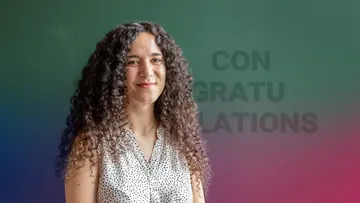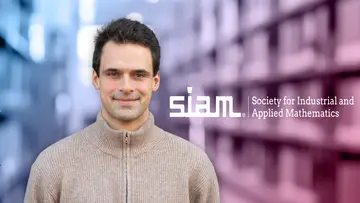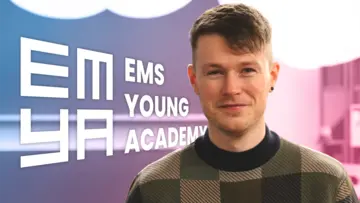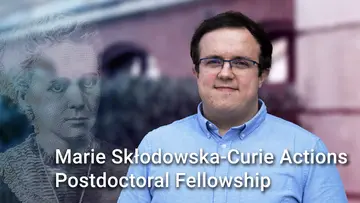
New year, new scholarships
Published Jan 25, 2022
We are very proud that our scientists Lukas Barth and Arthur Bik were able to start the new year with prestigious grants. Congratulations!
Lukas Barth was awarded a scholarship by Studienstiftung des Deutschen Volkes
It is a great honor for Lukas to be funded by the oldest and largest organization for the promotion of talented young people in Germany. He is looking forward to meeting a network of promising and interesting people, and he hopes that valuable ideas and perhaps friendships will develop through mutual exchange. Lukas is a doctoral student in Jürgen Jost's group.
He plans to use the fellowship to investigate the mathematical formalization of concept emergence over the next two years. This is relevant in philosophy, linguistics, formal logic, psychology, neuroscience, and computer science, especially in the field of machine learning. Lukas attempts to approach the subject constructively from the logical-algorithmic realm. His starting point is the question of how one could formally describe a system (e.g., a recursive neural network or generalizations thereof) that, by interacting with a flow of information at the microscopic level (e.g., information in the form of pixels or photons), can gradually autonomously extract relationships between macroscopically relevant information (e.g., objects, motion sequences, etc.) that have meaning for the system's goals.
His research builds, among other things, on works in the field of “predictive coding”, which can perhaps be understood as a modern development of the principle of “unconscious inference” formulated as early as 1867 by Hermann von Helmholtz. According to this principle, an internal replication of the relationships of incoming information takes place by continuously (and “unconsciously”) verifying or discarding certain predictions about the flow of information and its effects in the system through a learning mechanism in the system. Lukas devotes particular attention to the question of what the system architecture and learning algorithm might look like in order to produce units of information in the system that could at least be called precursors of what we call concepts.
Arthur Bik was honored with a Postdoc.Mobility grant by the Swiss National Science Foundation
Our postdoc’s research project “The Geometry of Polynomial Functors” is also funded for the next two years. The Postdoc.Mobility fellowship, which is aimed at scientists who wish to pursue an academic career in Switzerland, is associated with one-year research stays here at the Max Planck Institute and Texas A&M University in the USA.
Arthur is working in the field of algebraic geometry and seeks to understand objects through their symmetry. He will use the fellowship to investigate the behavior of these objects as their size goes to infinity. By using the symmetry, the structure of objects of a certain size
The earliest occurrence of this concept can already be found in the work of Daniel Cohen from 1967, whereupon it lay dormant for 40 years. However, the last ten years have seen a revival of this topic culminating in the proof of a famous conjecture of Michael Stillman by Tigran Ananyan and Melvin Hochster, and Draisma's Noetherianity Theorem concerning so-called polynomial functors. Arthur aims to build on these results and investigate the geometry of these polynomial functors, which has been shown to be deeply linked to the classical study of rank functions.
Scientific Contact
Editorial Contact
Discover More
-
www.studienstiftung.de
Website of the German Academic Scholarship Foundation
-
data.snf.ch
Arthur Bik's research project “The Geometry of Polynomial Functors”
-
www.snf.ch
Website of the Swiss National Science Foundation
Related Content

Young Talent Award for Laura Casabella Young Talent Award for Laura Casabella

Simon Telen to Receive SIAM Award Simon Telen to Receive SIAM Award

Patrick Heslin appointed to EMYA Patrick Heslin appointed to EMYA


